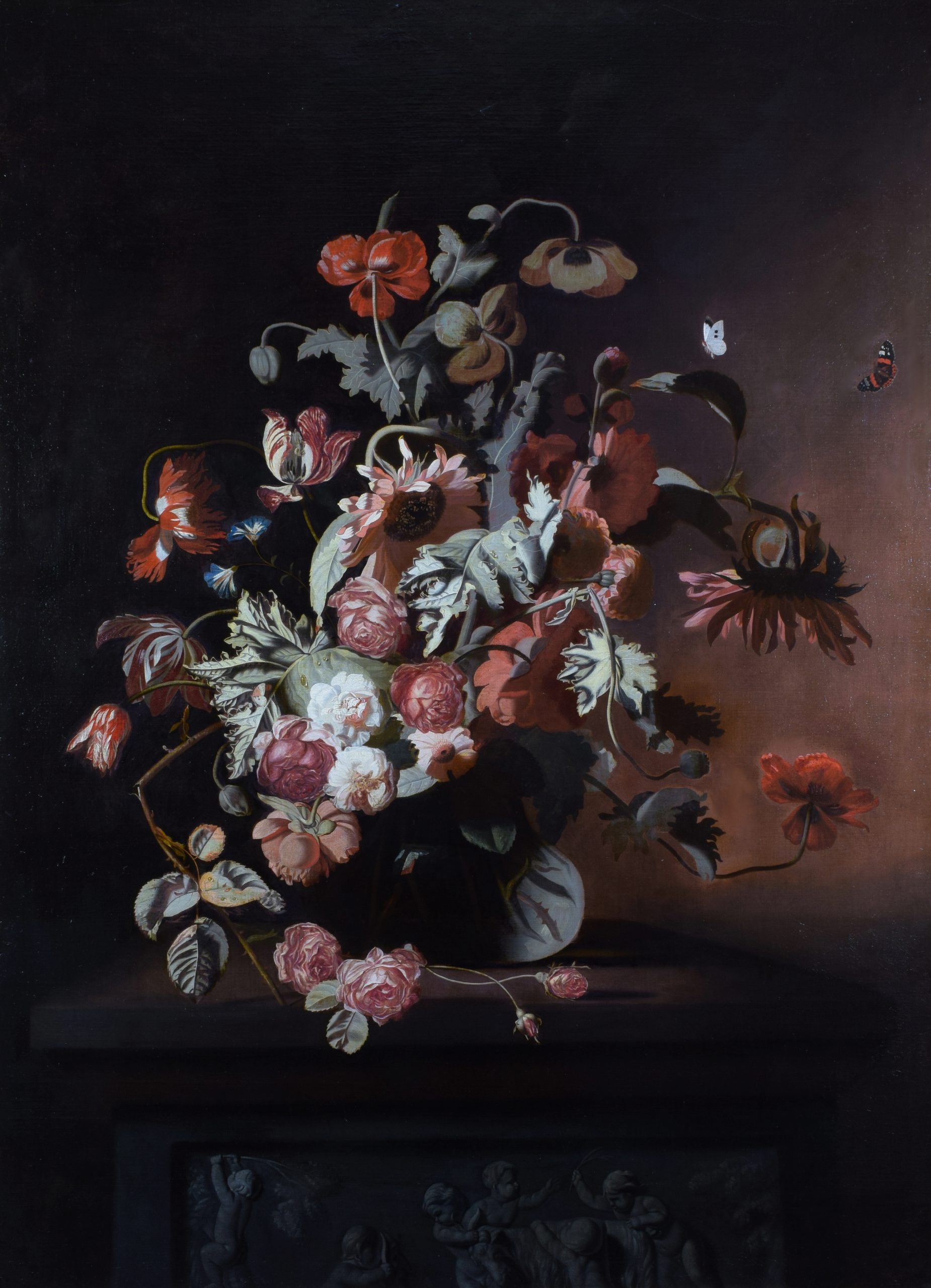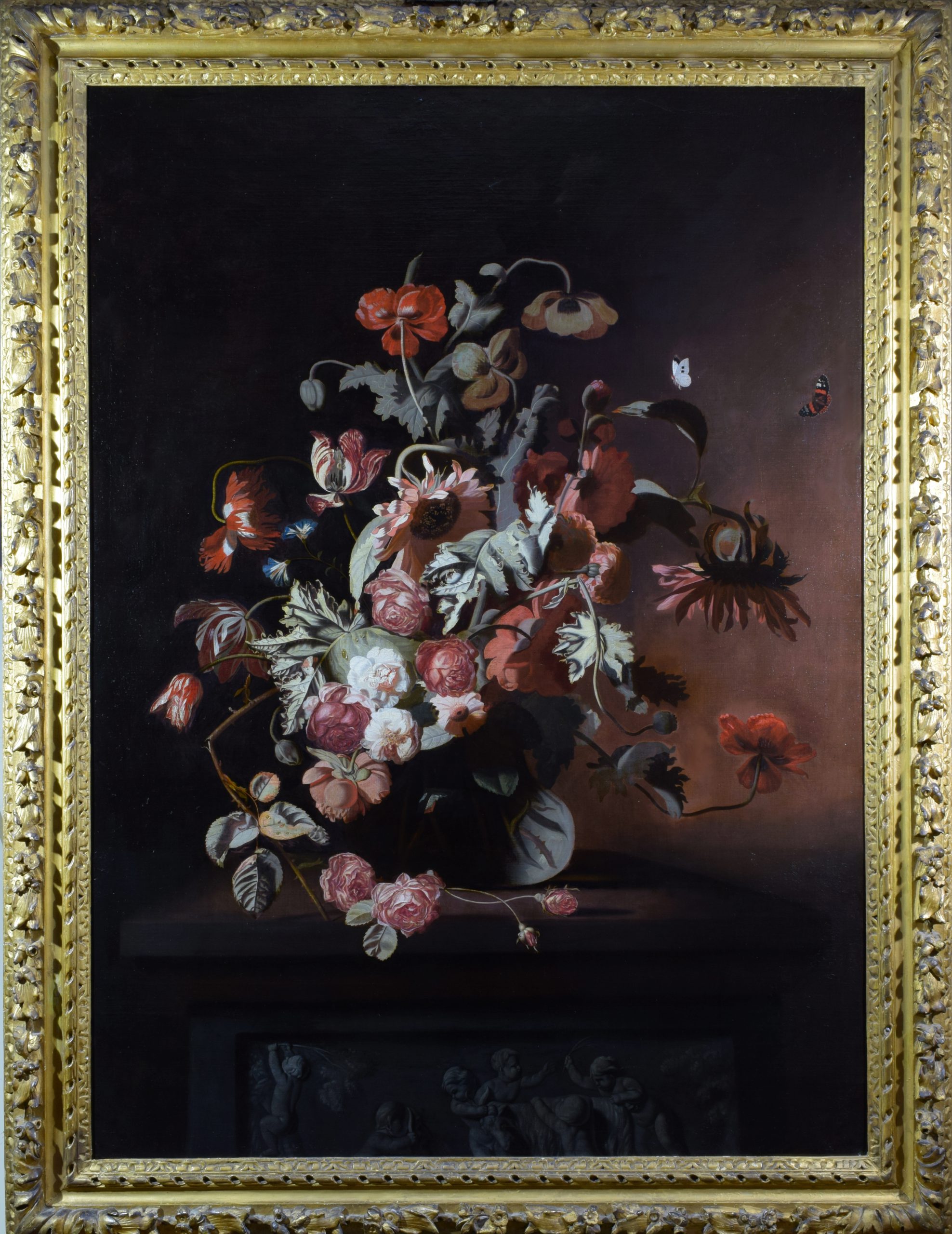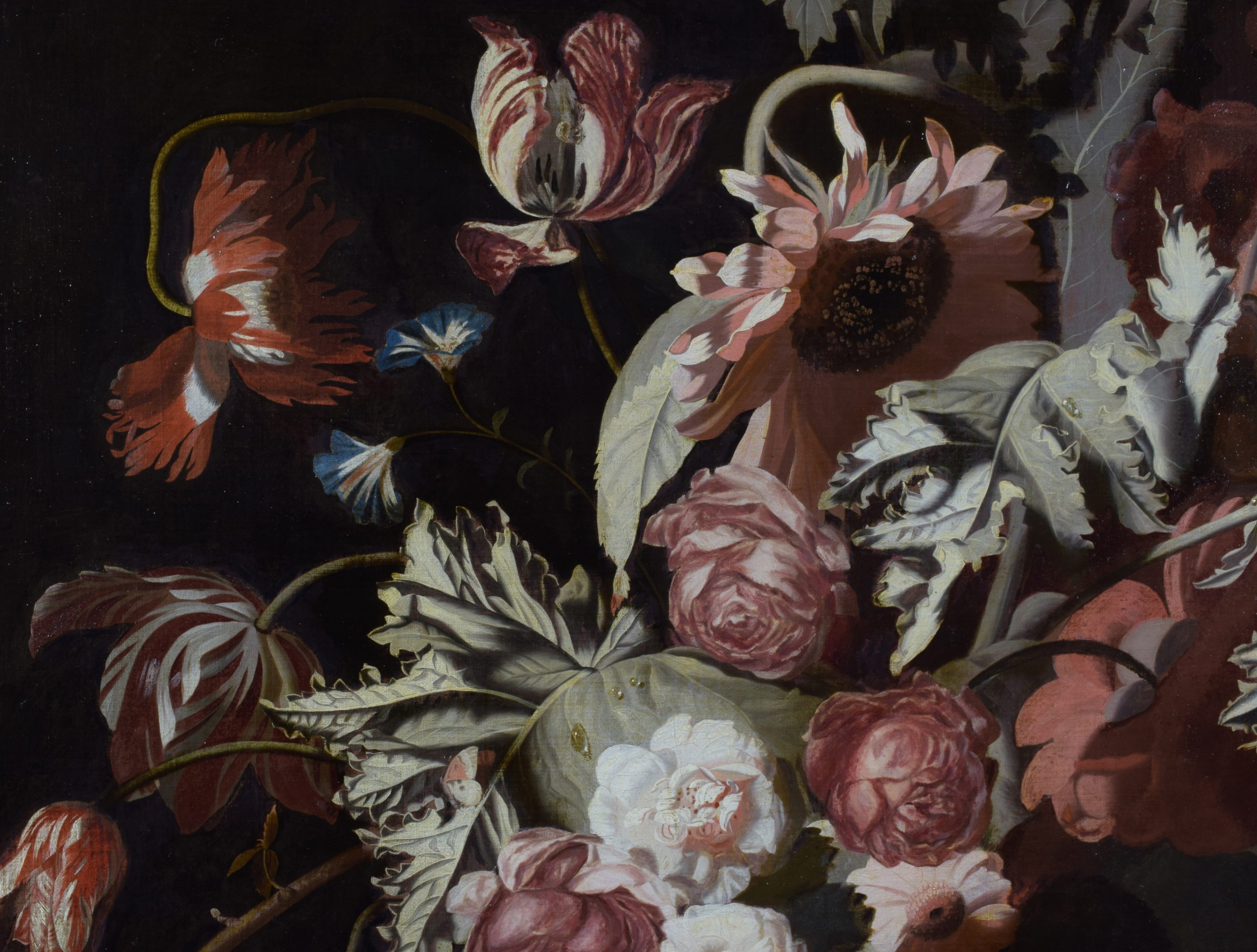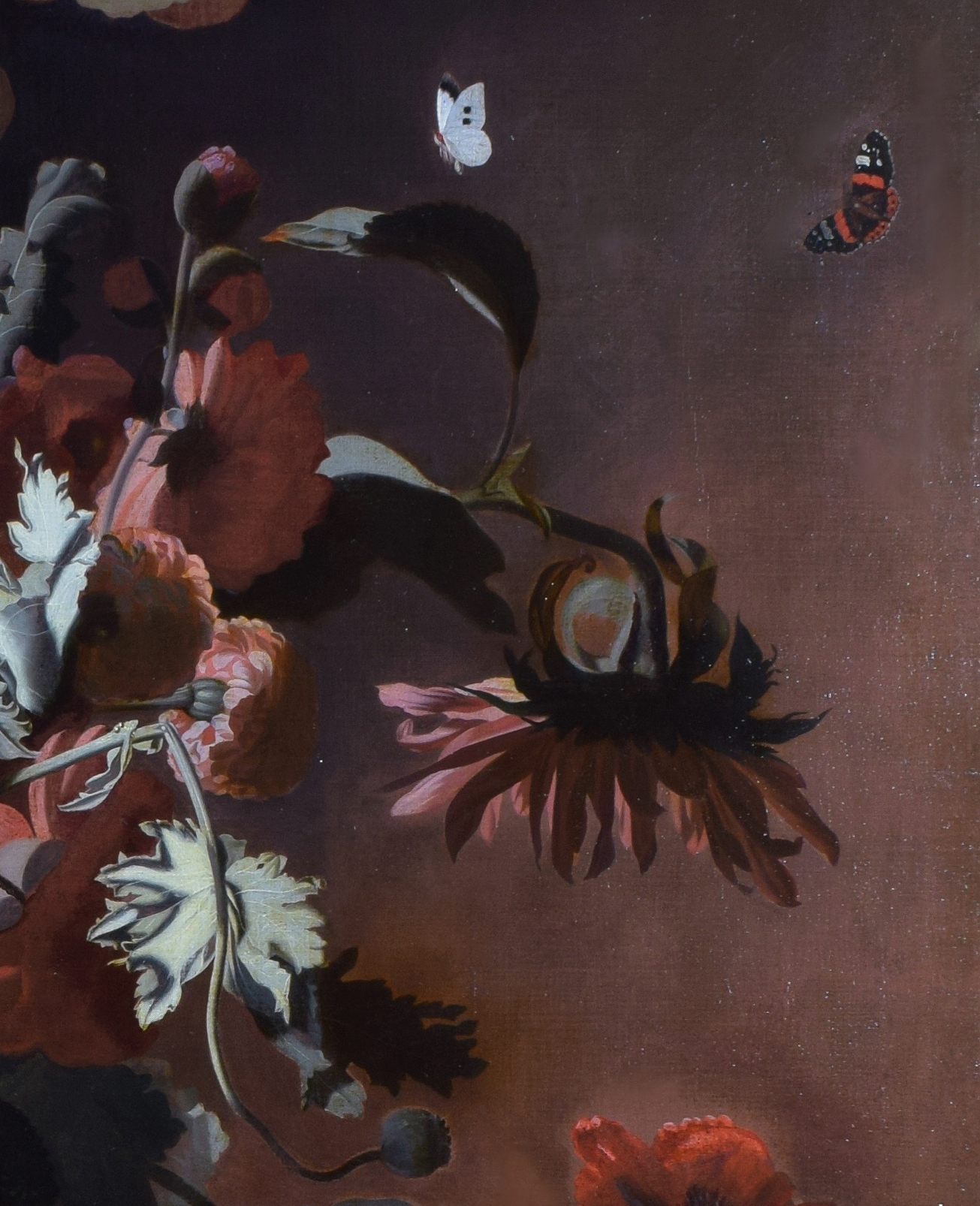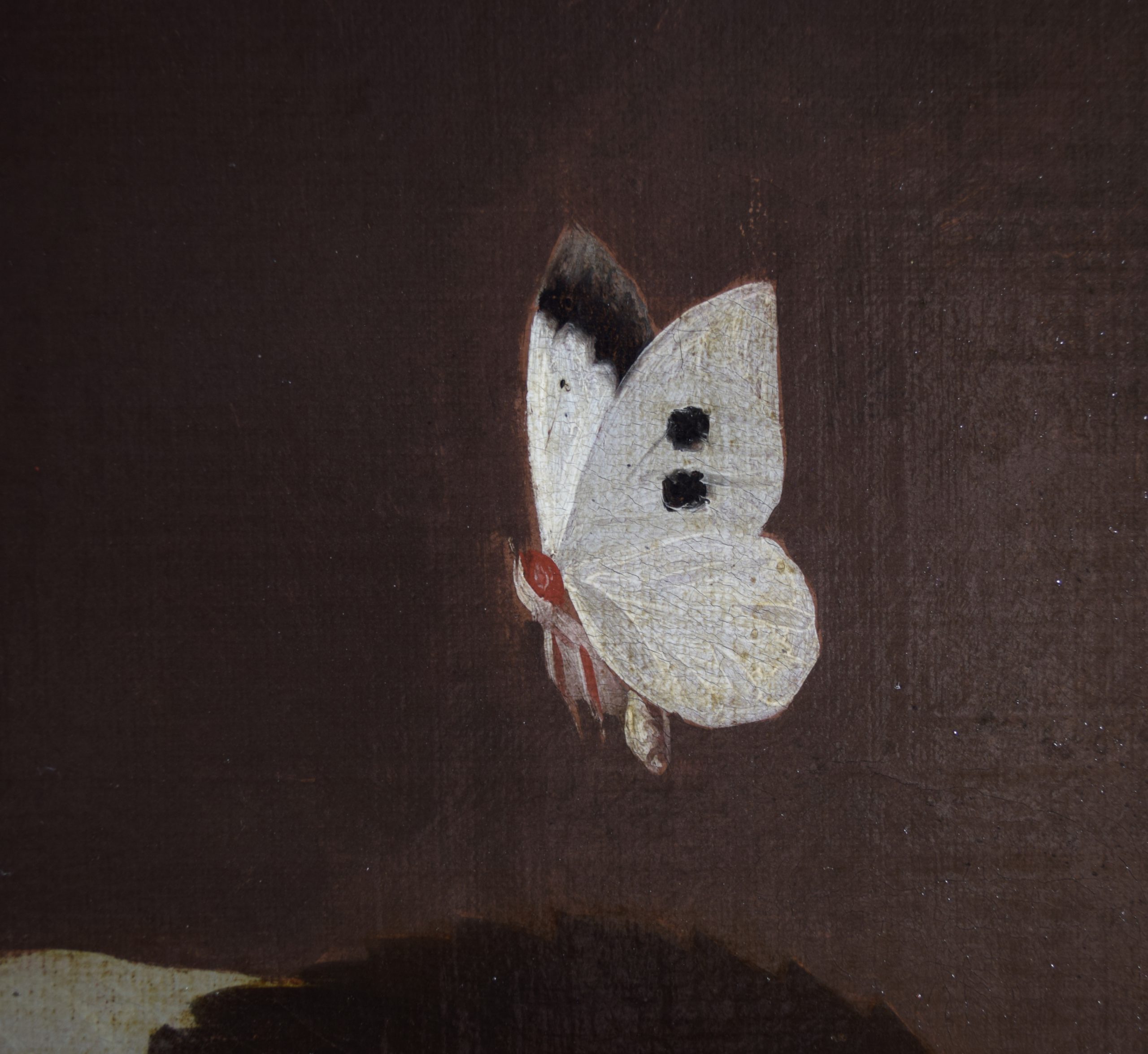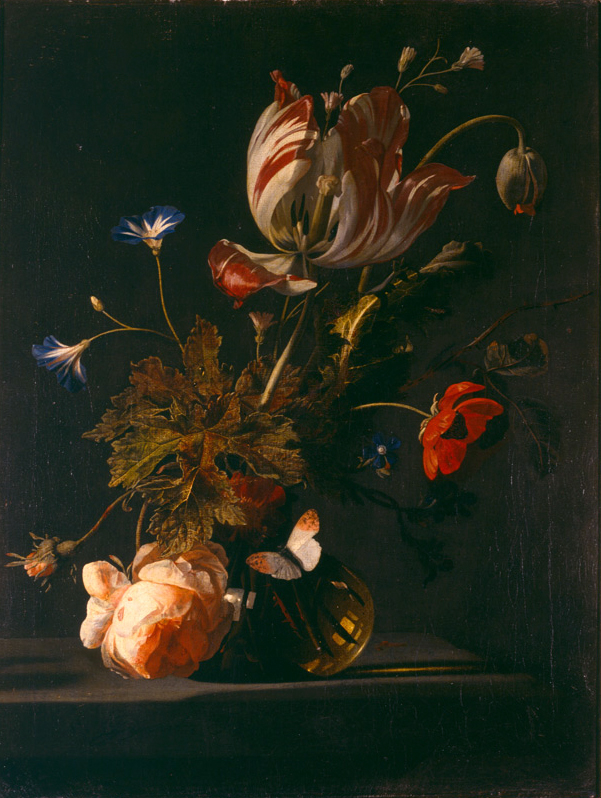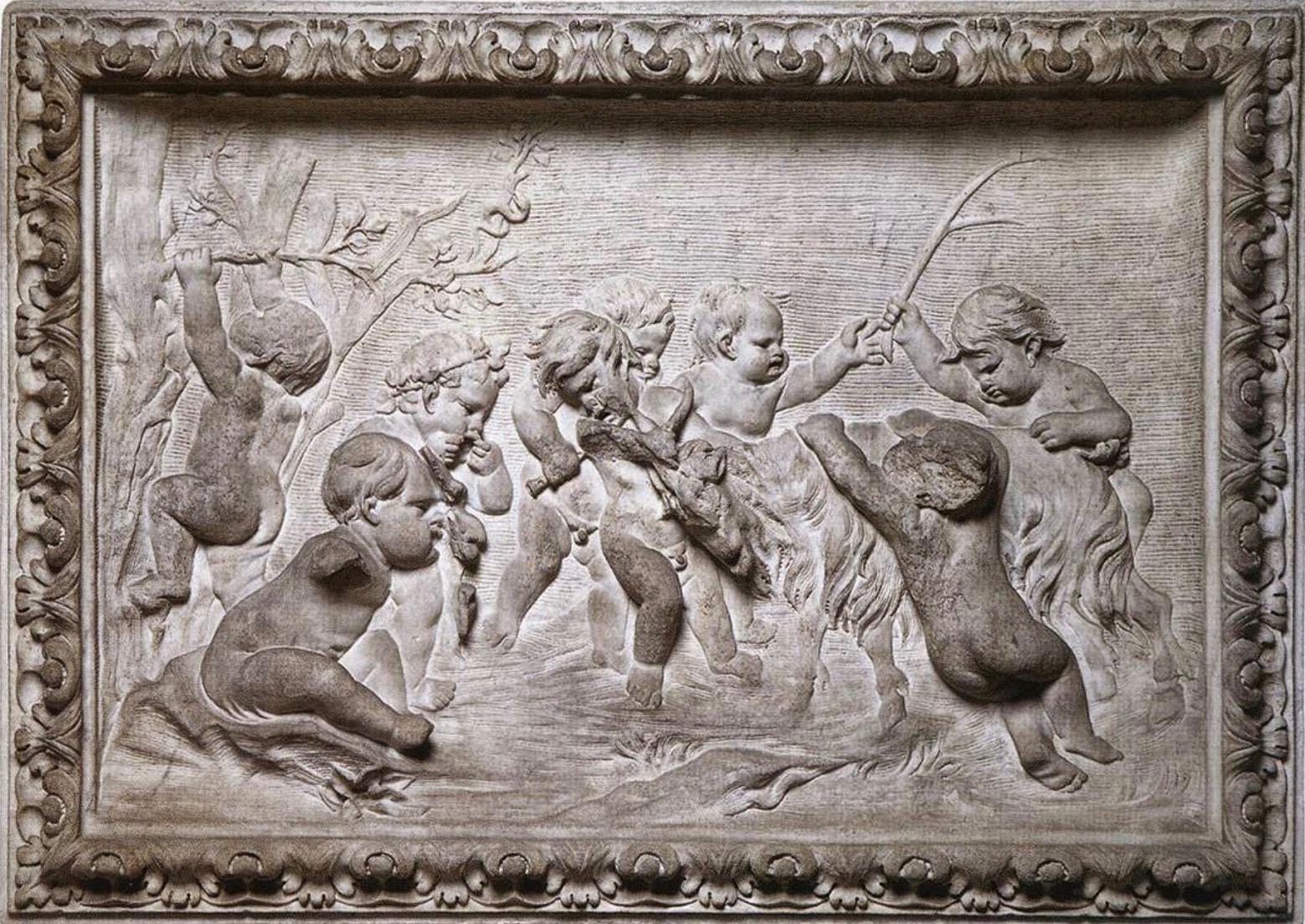SIMON VERELST (The Hague 1644 – 1710 London)
Simon Verelst (The Hague 1644 – 1710 London)
Roses, poppies, sunflowers, tulips, peonies and other flowers in a glass vase on a stone ledge
Oil on canvas, 171 x 124 cm (67.3 x 48.4 inch); contained in the original giltwood frame of circa 1700
Provenance
~ Possibly at Burley-on-the-Hill since the eighteenth century
~ Major James Hanbury, Burley-on-the-Hill, Rutland
~ His sale, Christie’s, London, 20 June 1947, lot 96, repr.
~ Dr J.A. van Dongen, Amsterdam
~ Mr L. Tholen, Amsterdam
~ Private collection, The Netherlands
~ Christie’s, Amsterdam, 14 November 2012, lot 70, repr.
~ Private collection, The Netherlands
Literature
Frank Lewis, Simon Pietersz Verelst: 1644-1721, Leigh-on-Sea, 1979, cat. no. 1, p. 23, repr.
***
Simon Verelst was born in The Hague in 1644 as the son of the genre painter Pieter Verelst (c.1618–c.1678), who also produced a few still-lifes, and taught Simon the art of painting; Simon’s brother, Herman, also became a painter.1 In 1663 Simon moved to nearby Voorburg, and in that year also became a member of the painters’ society Confrerie Pictura. In 1668 or 1669 he travelled to London, where he established a reputation as a brilliant flower painter. He painted portraits, too, and was honoured by different writers of the time. After he had invited Samuel Pepys (1633–1703), Chief Secretary to the Admiralty of England and Member of Parliament, to his studio in 1669, the naval administrator expressed his great admiration for a flower piece in his famous diary, particularly for the natural representation of the water droplets, adding, ‘(…) a better picture I never saw in my whole life; and it is worth going twenty miles to see it’.2
Verelst was extremely popular with the English aristocracy. King George II possessed no less than six flower pieces and three portraits by Verelst. The painter was honoured in Holland, too, during his lifetime. In 1707, Gerard de Lairesse considered him the best flower painter ever, while Jacob Campo Weyerman also recorded his admiration for Verelst. According to the latter biographer, his success went to his head, and in his arrogance Verelst called himself ‘den God der bloemen, en den Koning der Konterfyters’ (‘the God of the flowers, and the King of the painters’), and saw himself as equal to Charles II. In 1680 he went to Paris, where he worked for Louis Michiel.
Verelst primarily painted flower pieces, but also produced some still-lifes with fruit and birds, and a number of portraits. He generally did not sign or date his works. His flower bouquets are usually quite open and loosely arranged, with plenty of space between the stems and flowers. They are usually also asymmetrical, with a diagonal central axis, and reveal a certain degree of tonality., with bright and translucent colours. Notable is the almost complete absence of insects and other small creatures, except for the occasional presence of butterflies, which can also be seen in the present work. In leaves and other areas Verelst generally used a bright green varnish, applied on top of a yellow-grey base layer – the fragility of this upper glaze meant that they were injudiciously removed during later restorations more often than not.
Flower pieces by Verelst are preserved in many of the world’s leading museums and private collections, including the Fitzwilliam Museum in Cambridge, the Herzog Anton-Ulrich Museum in Braunschweig, the Szépmüvészeti Museum in Budapest, the Cleveland Museum of Art, the Statens Museum for Kunst in Copenhagen, the Wadsworth Atheneum in Hartford, Connecticut, the Ashmolean Museum in Oxford and the Nationalmuseum in Stockholm. Our work can for instance be compared to Verelst’s Mixed Flowers in a Glass Vase in the Bredius Museum in The Hague (fig.).3
The present painting is the largest work known by Verelst, truly monumental in scale and doubtlessly made for a highly important client. Its provenance indicates it may have been at Burley-on-the-Hill during the eighteenth century. The house, formerly owned by the Dukes of Buckingham, in 1689 came into possession of Daniel Finch, 2nd Earl of Nottingham (1647–1730), Solicitor General and Lord Chancellor, whose previous home, Kensington House in London, was sold to William III, thenceforward known as Kensington Palace. It is possible the painting was acquired by Lord Nottingham directly from Verelst and was intended for Burley.
The bas-relief depicting Putti playing with a Goat derives from a marble original from the 1620s by the Flemish sculptor François Duquesnoy (1597–1643), preserved in the Palazzo Doria Pamphilj, Rome (fig.).4
SOLD
1. For the artist, see: Frank Lewis, Simon Pietersz Verelst: 1644-1721, Leigh-on-Sea 1979, Adriaan van der Willigen and Fred Meijer, A dictionary of Dutch and Flemish still-life painters working in oils: 1525-1725, Leiden 2003, p. 204 and Sam Segal and Klara Alen, Dutch and Flemish flower pieces. Paintings, drawings and prints up to the nineteenth century, Leiden/Boston 2020, pp. 254-58.
2. H.B. Wheatley, The diary of Samuel Pepys, London 1893-96, II, p. 1057, 11 April 1669.
3. Oil on canvas, 44 x 35 cm, signed and dated 1669, inv. no. 124-1946; A. Blankert, Museum Bredius. Catalogus van de schilderijen en tekeningen, Zwolle/The Hague 1991, pp. 236-237.
4. Estelle Cecile Lingo, François Duquesnoy and the Greek Ideal, New Haven 2007, pp. 46–53.
